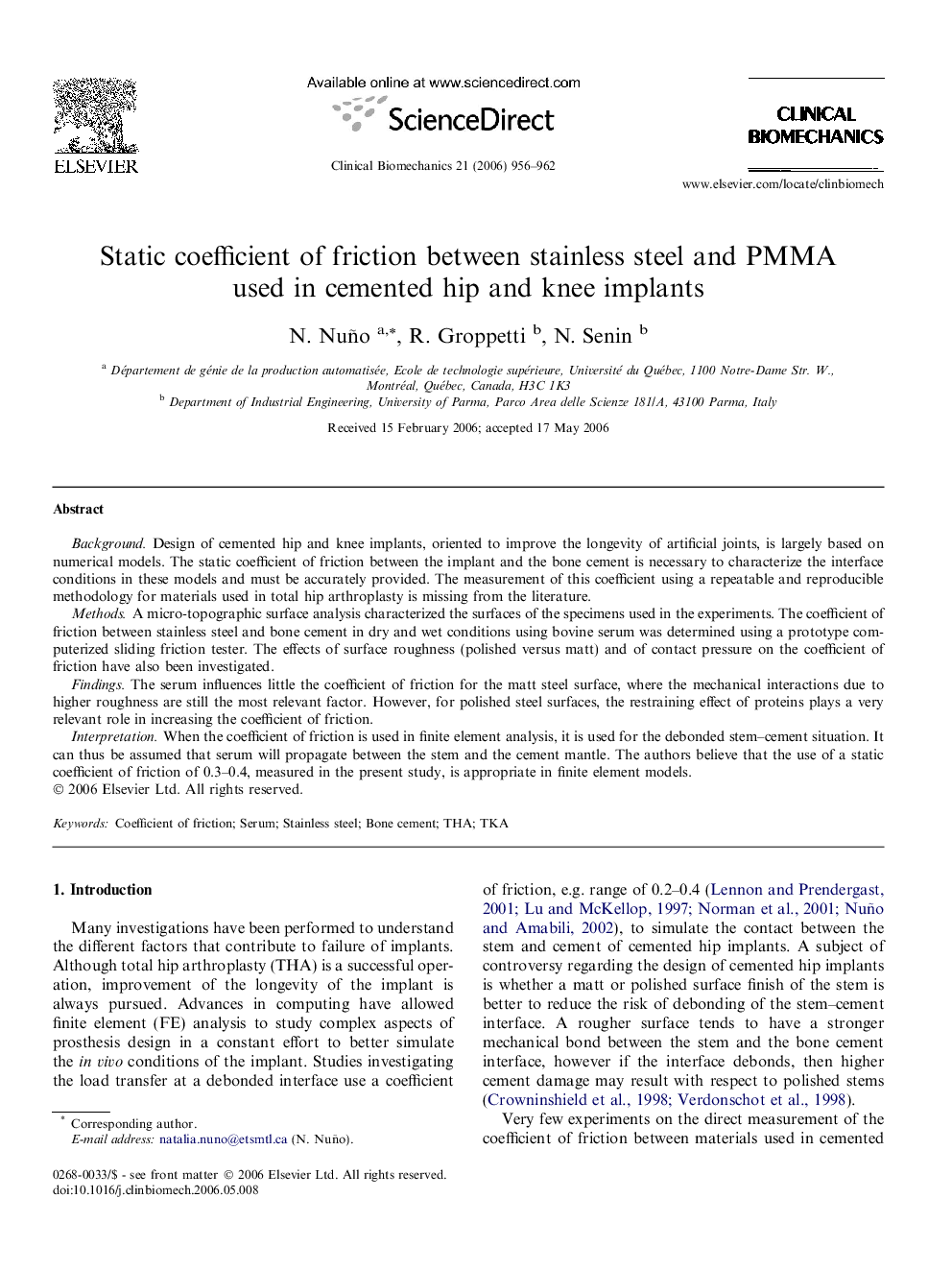| Article ID | Journal | Published Year | Pages | File Type |
|---|---|---|---|---|
| 4051350 | Clinical Biomechanics | 2006 | 7 Pages |
BackgroundDesign of cemented hip and knee implants, oriented to improve the longevity of artificial joints, is largely based on numerical models. The static coefficient of friction between the implant and the bone cement is necessary to characterize the interface conditions in these models and must be accurately provided. The measurement of this coefficient using a repeatable and reproducible methodology for materials used in total hip arthroplasty is missing from the literature.MethodsA micro-topographic surface analysis characterized the surfaces of the specimens used in the experiments. The coefficient of friction between stainless steel and bone cement in dry and wet conditions using bovine serum was determined using a prototype computerized sliding friction tester. The effects of surface roughness (polished versus matt) and of contact pressure on the coefficient of friction have also been investigated.FindingsThe serum influences little the coefficient of friction for the matt steel surface, where the mechanical interactions due to higher roughness are still the most relevant factor. However, for polished steel surfaces, the restraining effect of proteins plays a very relevant role in increasing the coefficient of friction.InterpretationWhen the coefficient of friction is used in finite element analysis, it is used for the debonded stem–cement situation. It can thus be assumed that serum will propagate between the stem and the cement mantle. The authors believe that the use of a static coefficient of friction of 0.3–0.4, measured in the present study, is appropriate in finite element models.
